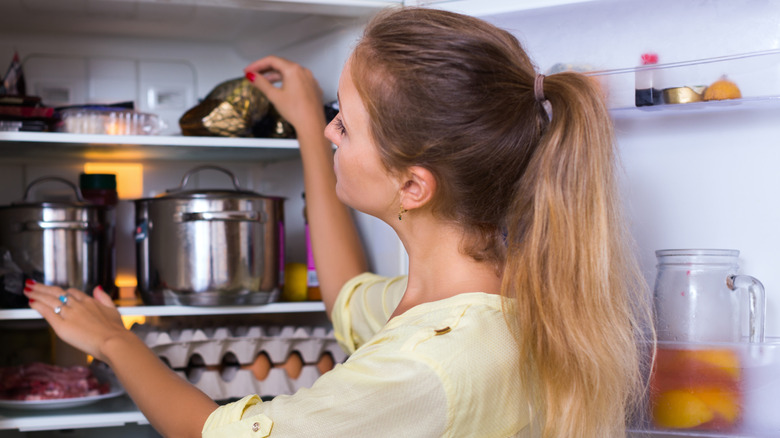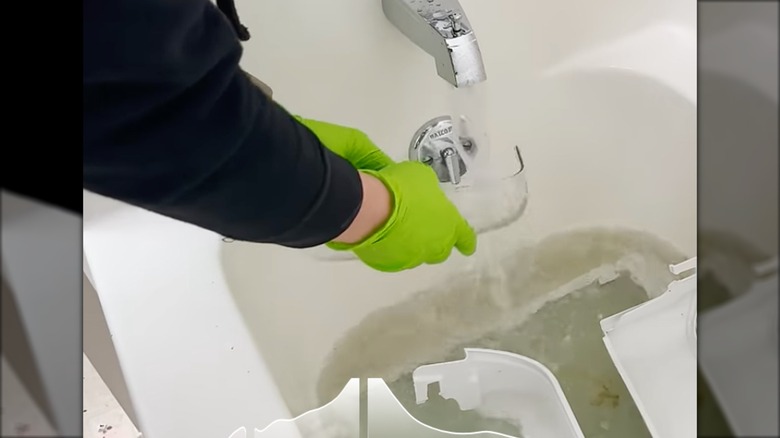Avoid This Big Mistake That Could Damage Your Fridge During A Deep Clean
We may receive a commission on purchases made from links.
Refrigerator shelves that look like a science experiment with spills, stains, or smells are more than just unsightly. A dirty fridge can harbor bacteria, mold, and pathogens such as Salmonella or E. coli, which can spoil your food and give you symptoms like stomachaches or worse. It's important to wipe up any messes immediately with a wet cloth or sponge to prevent contamination. It's also smart to clean your fridge to make it last longer — since regular maintenance can keep any appliance running smoothly.
While your refrigerator's cold temperatures can slow the spread of harmful bacteria, you should give your fridge's shelves a deep clean about every three to four months to ensure a clean environment. But be careful: Don't make the mistake of washing the shelves immediately in hot water since doing so can cause a rapid change in temperature that may shatter the glass. To avoid this, let your refrigerator shelves come to room temperature before attempting to wash them in hot water in your kitchen sink.
Start by clearing the shelves of old leftovers or any food past its prime (you can put those in the trash) and move what's still good to another refrigerator or a cooler with some ice or ice packs. While there are cleaning hacks that'll make your refrigerator really sparkle, washing the shelves in hot, soapy water works just as well. Before cleaning your shelves, take everything off them and take the shelves out of the fridge; most are designed to easily slide out. Move your food to another cool place for storage — or you could just empty and clean one shelf at a time.
How to safely wash refrigerator shelves
While some people wash refrigerator shelves in the dishwasher, handwashing them will protect non-dishwasher-safe components. While the shelves warm up on your counter or floor, fill your sink or bathtub with hot, soapy water. Soak your fridge shelves in the bathtub for an ultimate clean if you can for a few minutes — the extra space will allow you to soak more of each shelf at once. Clean carefully. A scrub sponge like this one from Scrubit will get food bits off the surfaces.
Once a shelf looks squeaky clean, rinse it with water, being sure to remove soapy residue. After rinsing off all the soap from a shelf, use a soft dry towel to wipe away any moisture. If you like, you can repeat this process with other removable parts of your refrigerator, such as bins or drawers.
Before putting everything back, take a moment to carefully consider where each item should go — now's the perfect time to rethink your fridge's organization so you can keep food fresher for longer and find what you need faster to ease meal preparation. For instance, you could consider protecting the surfaces with washable refrigerator liners or a non-adhesive, waterproof shelf liner to keep surfaces cleaner longer. While you should still deep-clean your refrigerator's shelves regularly, these replaceable covers may make it less of a chore since they can avert spills from your refrigerator's shelving. You'll find that if you can dedicate even just a little time here and there to keeping your refrigerator tidy and giving it a deep clean every now and then, it'll be not only pleasantly spotless but also safer and more hygienic.

